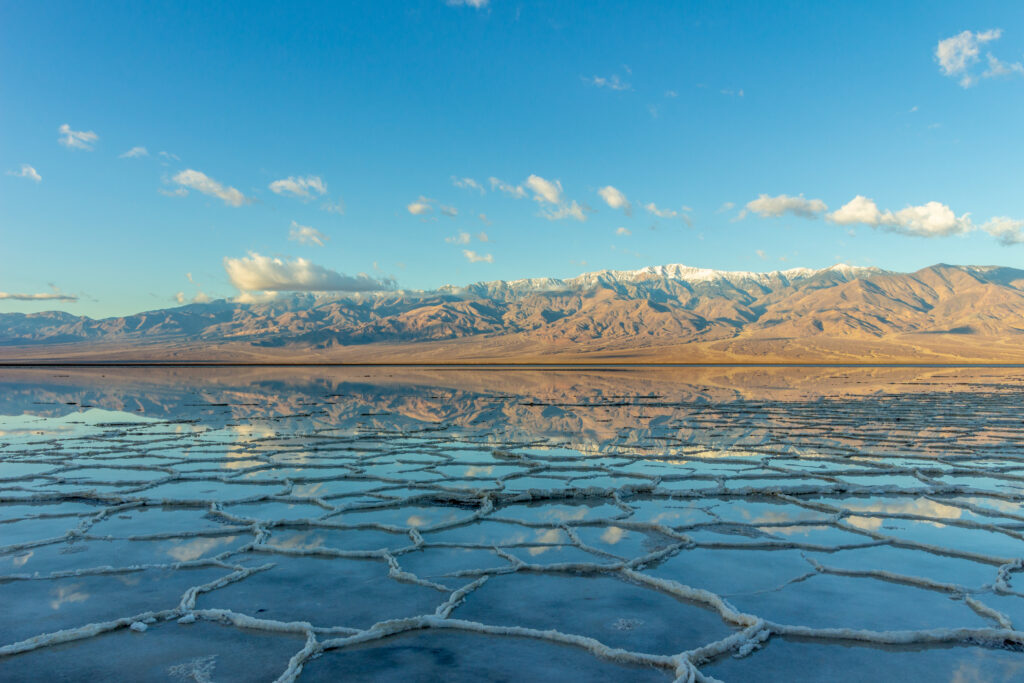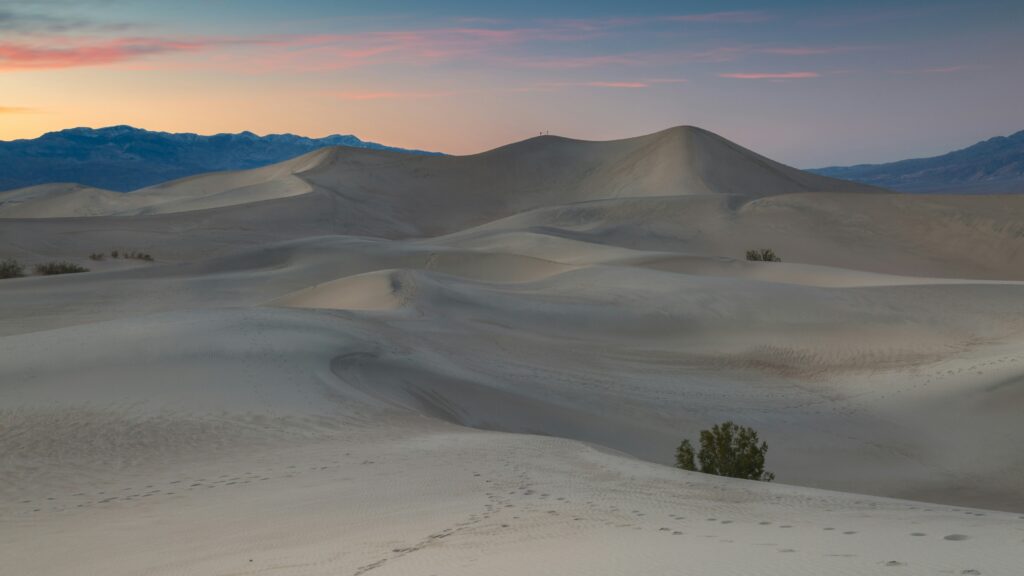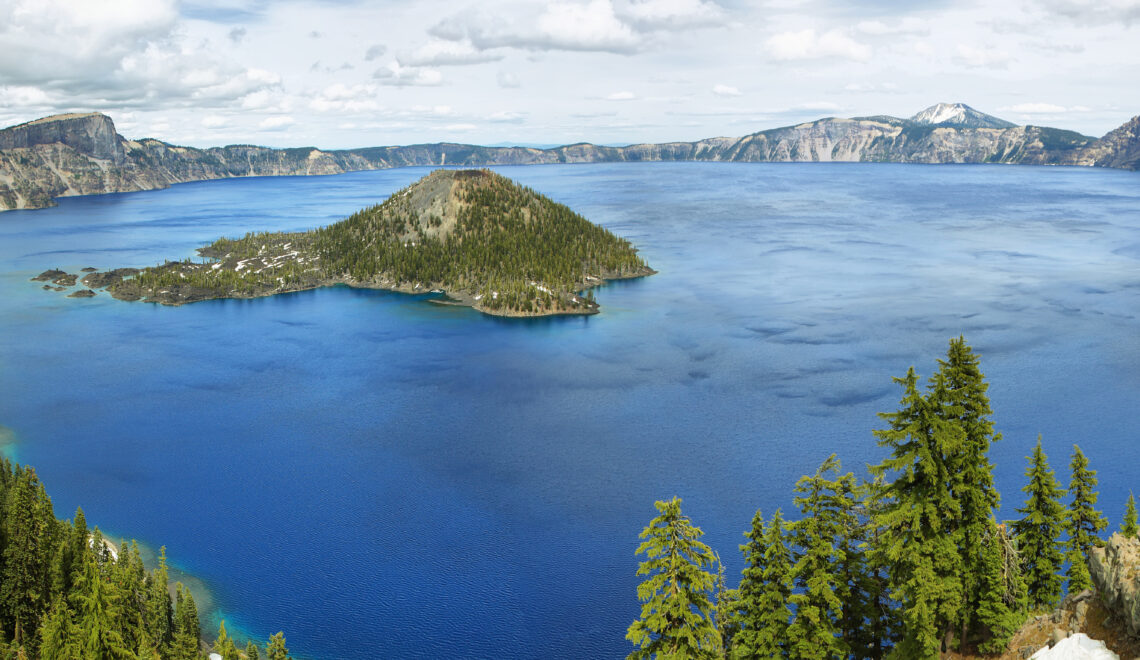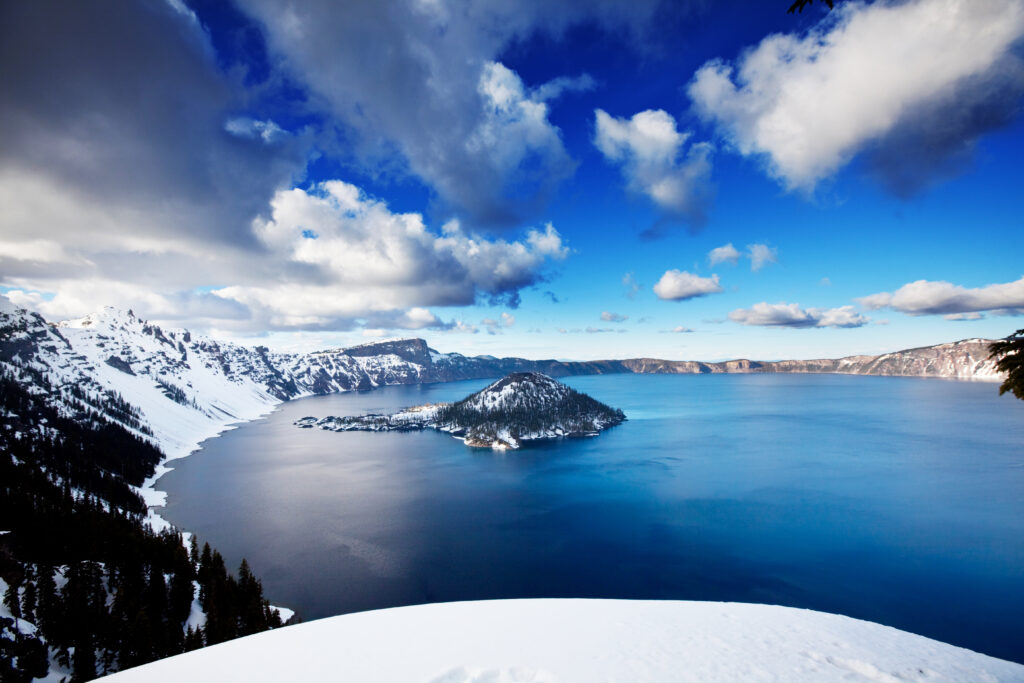A Day in Death Valley: From Sunrise to Stars
Begin your adventure in Death Valley National Park, a land of extremes, where the stunning landscapes tell tales of geological wonders, and the temperatures soar to record highs. Even with just one day to spare, you can experience the best of Death Valley, from the salt flats of Badwater Basin to the panoramic views from Dante’s View. Prepare for an unforgettable journey through one of the most unique national parks in America with our itinerary.
Some posts on this site contain affiliate links, meaning if you book or buy something through one of these links, I may earn a small commission at no extra cost to you.
Planning Your Visit to Death Valley National Park

When to Visit:
Timing is everything when planning a visit to Death Valley National Park. Known for holding the record for the hottest place on earth, the best time to visit is during the cooler months from November to March. During this period, daytime temperatures are pleasant, and the park’s unique landscapes are more accessible. If you’re aiming to capture the beauty of Death Valley under a blanket of wildflowers, plan your visit for late February to early April, when the desert blooms in a rare display of life.
Parking and Entrance Fees:
Death Valley is vast, and knowing where to park can save you time. Most major attractions, like Zabriskie Point, Badwater Basin, and Mesquite Flat Sand Dunes, have designated parking areas. Despite its size, parking spots can fill up quickly during peak visitation times, so arriving early or later in the day is advisable.
The entrance fee for a private vehicle, which covers a 7-day period, is $30. This fee is particularly worthwhile if you’re planning multiple entries into Death Valley over several days, though it’s also applicable for single-day visits. For those entering on foot or by bicycle, the cost is $15 per person, also valid for 7 days. While walking into Death Valley might seem unusual, it remains an available option.
For extensive explorers, the annual America the Beautiful Pass, priced at $80, offers incredible value. This pass grants access to all national parks and federal lands that charge entry fees. Having purchased my first pass in 2017, I can attest to its value as a significant cost-saving measure for frequent visitors to these natural treasures.
Accommodations:
After a long day of exploration, finding a comfortable place to rest is crucial. Where to stay in and around Death Valley offers options ranging from camping under the stars to enjoying the comfort of historic inns. Inside the park, The Inn at Death Valley and The Ranch at Death Valley provide a range of accommodations, from luxury rooms to more budget-friendly options, along with amenities like swimming pools and dining. For those who love the great outdoors, several campgrounds are available, offering both RV hookups and tent sites. Booking in advance is highly recommended, especially during the cooler months when the park sees the highest visitation.
Preparing for Your Visit:
A successful trip to Death Valley requires preparation. Check the Death Valley National Park website for the latest information on weather conditions, road closures, and safety tips. Remember, cellular service is limited, so download or print maps and guides ahead of time. Pack plenty of water—at least one gallon per person per day—sunscreen, and protective clothing to shield yourself from the sun. Finally, always inform someone of your travel plans, especially if you’re venturing into remote areas of the park.
Sunrise at Zabriskie Point

First Light on Golden Hills: Start your day with the sunrise at Zabriskie Point, where the early morning light paints the badlands in hues of gold and amber. This spot offers one of the most iconic views of Death Valley, showcasing the park’s rugged beauty.
Preparation is Key: To catch the sunrise, you’ll want to arrive early. This means leaving your accommodation while it’s still dark, so plan your route and pack the night before. Essentials include a flashlight (like this solar powered one), warm layers (mornings can be cool, even in the desert), water, and of course, your camera to capture the moment.
Breakfast at Furnace Creek

Fuel Up for the Day: After sunrise, head to Furnace Creek, located about a 20-minute drive from Zabriskie Point. Here, you can enjoy a hearty breakfast at one of the local eateries, gearing up for a day of exploration.
- Dining Options: Choose from a variety of dining venues at Furnace Creek, ranging from casual cafes to more formal sit-down restaurants. Whether you’re in the mood for a quick, energizing breakfast to get back on the road or a leisurely meal to savor the morning, you’ll find something to suit your taste and schedule. Don’t miss out on local favorites like hearty omelets, fresh-baked pastries, and, of course, plenty of coffee to kickstart your day.
- Visitor Center Stop: After breakfast, a quick visit to the Furnace Creek Visitor Center is highly recommended. Here, you can gather valuable information about the park, including current conditions, recommended hikes, and any ranger-led programs happening during your visit. It’s also a great place to pick up souvenirs and educational materials about Death Valley’s unique ecosystem, geology, and history.
- Preparation for the Day: Furnace Creek’s amenities provide a perfect opportunity to prepare for the day’s adventures. Stock up on water and snacks at the general store, check the weather forecast, and make any last-minute adjustments to your itinerary. The friendly staff at the visitor center and dining establishments are also a great resource for insider tips on how to make the most of your day in the park.
Morning Hike: Golden Canyon

Trail Wonders: A short 10 minute drive from Furnace Creek, Golden Canyon offers an accessible hike that leads you through narrows and to viewpoints overlooking the Red Cathedral. It’s an excellent introduction to Death Valley’s geological marvels.
- Trail Highlights: The path through Golden Canyon feels like a journey through time, with informative markers detailing the geological history and pointing out significant features. Highlights include the Red Cathedral, an imposing natural edifice at the trail’s end, and various side paths that offer unique perspectives and solitude. Keep an eye out for the diverse plant and animal life that has adapted to thrive in this harsh environment.
- Hiking Tips: To fully enjoy your hike in Golden Canyon, start early to beat the heat and the crowds. Wear sturdy hiking shoes, as the terrain can be uneven and rocky. Bring plenty of water, sunscreen, and a hat to protect against the relentless sun. Although the trail is well-marked, carrying a map or downloading a trail guide on your phone is a good idea for navigation and learning more about the canyon’s features.
- Safety First: Remember, even in the cooler morning hours, temperatures in Death Valley can rise quickly. Listen to your body, and don’t push beyond your comfort level. Rest in shaded areas when available, and always stay on designated trails to minimize your impact on the fragile desert ecosystem and ensure your safety.
Badwater Basin: A Midday Marvel

Below Sea Level: A 15 minute drive from Golden Canyon, no visit to Death Valley is complete without stepping onto the salt flats at Badwater Basin. The lowest point in North America at 282 feet below sea level, presents a landscape so alien, it transcends the ordinary into something utterly breathtaking. The vast white expanse set against the desert mountains is a sight to behold.
- Walking on Salt: The main boardwalk at Badwater Basin allows you to step directly onto the salt flats. Here, the ground crunches underfoot, a tapestry of salt crystals stretching to the horizon. For those adventurous spirits, walking out into the flats reveals intricate patterns and polygons formed by the evaporating water—a photographer’s and geologist’s delight. Remember, though, the salt can be sharp, and sturdy shoes are a must.
- Heat Precautions: Midday at Badwater Basin is an awe-inspiring experience but also a challenge due to the Death Valley National Park temperature potentially soaring. It’s crucial to be well-prepared with water (more than you think you’ll need), high-SPF sunscreen, and protective clothing. A wide-brimmed hat and sunglasses are not just accessories but necessities to shield yourself from the intense sun.
- The Vast Perspective: For those looking to comprehend the vastness of Death Valley, Badwater Basin provides a unique perspective. The surrounding mountains, including Telescope Peak—the highest point in the park—offer a stunning visual contrast from the basin’s depths. This juxtaposition of the highest and lowest points within the same park underscores the extreme nature of Death Valley’s landscape.
Lunch and Leisure at Stovepipe Wells

Desert Dining: Head to Stovepipe Wells for a casual lunch, about a 30-minute drive from Badwater Basin. This small village offers dining options where you can refuel and relax before continuing your adventure.
- Dining Delights: Choose from a variety of dining options available at Stovepipe Wells. The local eatery specializes in hearty, comforting dishes that satisfy the hunger built up from a morning of adventure. From juicy burgers to refreshing salads, there’s something to please every palate. Enjoy your meal in a casual setting where the decor and atmosphere pay homage to the pioneering spirit of the early explorers of Death Valley.
- Relax and Recharge: After lunch, take advantage of the amenities offered in Stovepipe Wells. The village features a general store where you can stock up on supplies, souvenirs, and maybe some ice cream to beat the heat. For those looking to cool off, the village’s swimming pool is a refreshing retreat. Lounging by the poolside, you can relax and soak in the stunning desert vistas that surround you.
- Explore the Village: Stovepipe Wells isn’t just a place to eat and run; it’s worth exploring. Take a leisurely stroll around the village to discover its quaint charm. You’ll find informational displays that offer insights into the area’s history and natural features. It’s a great opportunity to learn more about Death Valley’s environment and the adaptations that life here requires.
Afternoon Adventure: Mesquite Flat Sand Dunes

Sands of Time: The Mesquite Flat Sand Dunes are a testament to the diverse landscapes of Death Valley and 2 miles from the Stovepipe Wells. Spend your afternoon wandering among the dunes, where the shapes and patterns change with the wind.
- Exploring the Dunes: The beauty of Mesquite Flat Sand Dunes lies in their accessibility and the freedom they offer. There are no designated trails, allowing you to create your own path through the soft sand. As you walk, the dunes unfold in various shapes and sizes, some reaching as high as 100 feet. The sound of the sand shifting underfoot and the sight of rare mesquite trees dotting the landscape add to the experience, making every step an adventure.
- Photography Tips: The afternoon light at Mesquite Flat Sand Dunes casts dramatic shadows, highlighting the dunes’ curves and textures. For the best photographs, aim to capture the contrast between light and shadow. Play with angles and perspectives—low shots can emphasize the dunes’ height, while panoramic views showcase their vastness. Remember, the dunes are most photogenic during the golden hours, when the sun is lower in the sky, enriching the colors and deepening the shadows.
- Safety and Preparation: Venturing into the dunes, especially under the afternoon sun, requires preparation. Wear sun protection, including a hat and sunglasses, and apply sunscreen regularly. Carrying water is a must, as the trek can be dehydrating. Additionally, wearing closed-toe shoes can protect your feet from the hot sand. Always keep the park’s landmarks in sight to navigate your return easily.
Sunset at Dante’s View

A Heavenly View: Conclude your day with a drive to Dante’s View, about an hour from Mesquite Flat Sand Dunes and Stovepipe Wells if you decide to go back and grab dinner from there. This mountaintop overlook provides one of the most spectacular vistas of Death Valley, especially at sunset.
- Preparing for Sunset: To experience the full majesty of sunset at Dante’s View, plan to arrive at least 30 minutes before the sun begins to dip below the horizon. This gives you ample time to find the perfect spot and set up any photography equipment. The temperature can drop quickly after sunset, so bring along extra layers to stay warm as you watch the day turn into night.
- Photography Tips: Sunset at Dante’s View is a dream come true for photographers. To capture the sprawling vistas, a wide-angle lens is recommended. Play with settings to catch the changing light, and consider using a tripod for stability, especially as the light fades. The moments just after the sun dips below the horizon can produce some of the most stunning photos, with the afterglow illuminating the valley in soft, pastel hues.
- Embracing the Silence: Beyond the visual spectacle, Dante’s View at sunset offers a moment of profound peace and reflection. As the hustle of the day fades away, take the time to simply be present and soak in the silence of the desert. The tranquility of watching the sunset from such an awe-inspiring vantage point is a fitting end to a day spent exploring one of nature’s most extraordinary landscapes.
Stargazing: The Night Sky Above
If you’re not ready to leave, stargazing is a great way to end the adventure. After the sun sets and darkness blankets Death Valley National Park, the celestial show begins. Stargazing in Death Valley offers an unparalleled experience, thanks to the park’s remote location and minimal light pollution. The night sky here is one of the darkest in the United States, making it an ideal canvas for the Milky Way, constellations, and meteor showers to reveal their splendor.
- Planning Your Stargazing Adventure: To maximize your stargazing experience, check the lunar calendar and aim for a night when the moon is least visible, as moonlight can diminish the visibility of stars. Familiarize yourself with the park’s best stargazing spots, such as Harmony Borax Works or the Mesquite Flat Sand Dunes, where the horizon stretches wide and unobstructed. Bring a blanket or a reclining chair, and dress warmly—the desert can get surprisingly cool at night.
- Tools of the Trade: While the naked eye can see plenty, bringing binoculars or a telescope (like this portable one) enhances the experience, allowing you to spot celestial bodies in greater detail. A star chart or an astronomy app can also be invaluable tools for identifying constellations and planets. Remember to give your eyes time to adjust to the darkness, a process that can take about 30 minutes, to fully appreciate the depth of the night sky.
- Embracing the Silence: As you stargaze, embrace the serene silence that envelops the desert at night. The quietude, punctuated only by the sounds of nature, adds a layer of tranquility to your astronomical exploration. It’s a moment to reflect, to dream, and to feel awe at the universe’s vast beauty and mystery.
Top Books for Death Valley National Park
The Explorer’s Guide to Death Valley National Park, Fourth Edition
The Explorer’s Guide to Death Valley National Park, Fourth Edition” isn’t just another guidebook; it’s a deep dive into one of the most extreme environments on Earth, wrapped up in an easy-to-digest format. This updated edition brings to light the park’s recent changes and challenges, like the Dingell Act adjustments and the Scotty’s Castle flood aftermath, all while keeping the adventurous spirit alive with new maps, stunning color photos, and comprehensive details on everything from hiking and biking to the rich cultural history and natural science of the area. Whether you’re a first-timer eager to explore the vast, stark beauty of Death Valley or a seasoned veteran looking to deepen your knowledge and appreciation, this guidebook is as indispensable as a bottle of water in the desert. It’s clear that the authors have poured extensive research and love into this book, offering insights not just on the trails, but on the very soul of Death Valley National Park.
Death Valley National Park: A History (America’s National Parks)
This read offers a profound and engaging exploration into the heart and soul of one of America’s most enigmatic landscapes. Far from being just a barren wasteland, this book uncovers the rich tapestry of environmental, cultural, and political narratives that have shaped Death Valley into the national treasure it is today. Starting from its geological origins and the lives of the Timbisha people, through the era of mineral exploitation and resort development, to the park’s hard-won battle for recognition and resources, the narrative is as compelling as it is informative. What makes this book stand out is its deep dive into the complexities and contradictions of preserving such a stark yet beautiful place. It’s not just a history book; it’s a story of survival, resilience, and the evolving understanding of what it means to protect natural wonders.





























